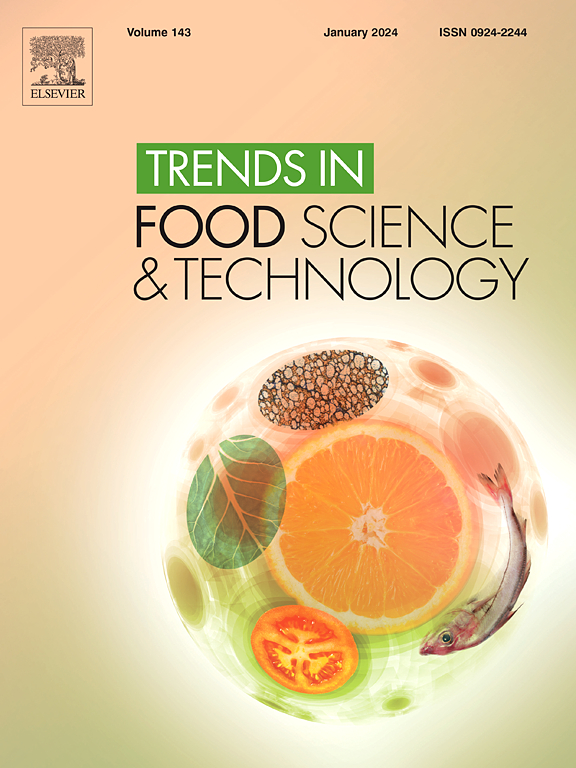Promotion of white fat browning by food-derived bioactive compounds and adipose tissue-specific targeting strategies
IF 15.1
1区 农林科学
Q1 FOOD SCIENCE & TECHNOLOGY
引用次数: 0
Abstract
Background
Obesity has become an important contributing factor to diseases such as diabetes and endocrine disorders. With the in-depth study of adipose tissue, beige adipocytes which are similar in morphology and function to brown adipocytes have attracted considerable attention. These cells can be transformed from white adipocytes in response to browning agent stimuli, offering new insights into obesity therapy.
Scope and approach
In this review, the mechanism of food-derived bioactives to promote the formation of beige fat is briefly introduced. Furthermore, the delivery carriers of food-derived agents targeting white adipose tissue (WAT) to enhance its browning are elucidated.
Key findings and conclusions
Various food-derived bioactives have been found to induce beige adipogenesis to promote energy consumption. However, the administration of these stimulants may exhibit low bioavailability and adverse actions on non-target tissues such as the heart and the central nervous system, thus restricting their application in obesity management. Constructing a browning agent delivery system targeting WAT will improve their bioavailability and stability, as well as enhance browning ability. Collectively, the development and application of delivery systems for food bioactive targeting white fat is an important strategy to achieve appreciable weight loss with minimal side effects.
食物来源的生物活性化合物和脂肪组织特异性靶向策略促进白色脂肪褐变
背景肥胖已成为糖尿病和内分泌紊乱等疾病的重要诱因。随着对脂肪组织研究的深入,与棕色脂肪细胞在形态和功能上相似的米色脂肪细胞引起了人们的广泛关注。这些细胞可以在褐变剂刺激下由白色脂肪细胞转化,为肥胖治疗提供了新的见解。本文就食源性生物活性物质促进米色脂肪形成的机理作一综述。此外,本文还阐明了针对白色脂肪组织(WAT)促进其褐变的食源性药物的递送载体。主要发现和结论:多种食源性生物活性物质可诱导米色脂肪形成,促进能量消耗。然而,这些兴奋剂的施用可能表现出低生物利用度和对非靶组织(如心脏和中枢神经系统)的不良作用,从而限制了它们在肥胖管理中的应用。构建以WAT为靶点的褐变剂给药体系可以提高WAT的生物利用度和稳定性,增强WAT的褐变能力。总的来说,开发和应用针对白色脂肪的食品生物活性递送系统是实现显著减肥和最小副作用的重要策略。
本文章由计算机程序翻译,如有差异,请以英文原文为准。
求助全文
约1分钟内获得全文
求助全文
来源期刊

Trends in Food Science & Technology
工程技术-食品科技
CiteScore
32.50
自引率
2.60%
发文量
322
审稿时长
37 days
期刊介绍:
Trends in Food Science & Technology is a prestigious international journal that specializes in peer-reviewed articles covering the latest advancements in technology, food science, and human nutrition. It serves as a bridge between specialized primary journals and general trade magazines, providing readable and scientifically rigorous reviews and commentaries on current research developments and their potential applications in the food industry.
Unlike traditional journals, Trends in Food Science & Technology does not publish original research papers. Instead, it focuses on critical and comprehensive reviews to offer valuable insights for professionals in the field. By bringing together cutting-edge research and industry applications, this journal plays a vital role in disseminating knowledge and facilitating advancements in the food science and technology sector.
 求助内容:
求助内容: 应助结果提醒方式:
应助结果提醒方式:


